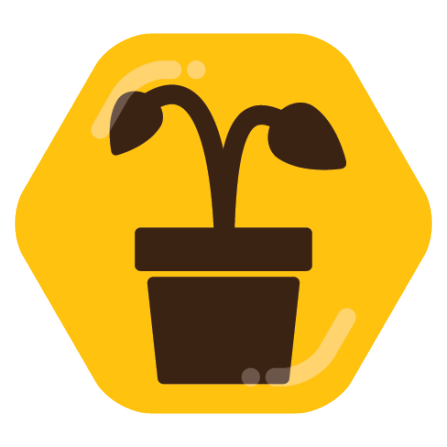Can anyone explain this to me? I cannot find anything searching for contadont :/
- 2 Posts
- 642 Comments
I like this list of instructions on how to have a beach body best:
- have a body
- go to the beach

 12·6 days ago
12·6 days agoWell, plants really don’t have to deal with our binary bullshit. Most of them don’t have any sex because they have perfect flowers anyways, meaning their flowers have male and female gametes.
If Santa is the Queen, there needs to be some male drones impregnating him. It would make sense that the reindeer would fly to the freshly hatched Santas to mate with them. The sledge is only their form of wings then.
As a biologist, it is always surprising to me, how frequently people don’t realize that all plants in our environment have some sort of reproduction. Like, that grass also has flowers and all house plants would also flower (except for ferns) if they were growing under the right conditions. Plant blindness is real.
Just that this “robin” isn’t one, it actually is a thrush. A robin would be Erithacus. They are both in different families even (and also look pretty different).
I really dislike cultivars like this where they have been changed so much it doesn’t look like actual plants…
Zarathustra kann mich mal :P
Confusingly, there is the animal in the post that is commonly called pika (Ochotona daurica). What I had to think of first was Pica pica though (the Eurasian magpie)

 21·20 days ago
21·20 days agoSouth Korea actually has a major problem with sexism and gender-based violence. Especially with men secretly filming women! It doesn’t seem unlikely that the filming of the gynecologist clinic was done in secret as well. Just because something is illegal doesn’t mean it actually gets punished.
There is also the larger context in which women experience daily sexism and violence. This fundamentally changes how they react to further violence. Victims of sexualized violence often think of themselves as responsible for the violence they receive, because society constantly tells them they are at fault! Victim blaming is part of society’s effort to tell women they are worthless and to keep control over them. If you solely focus on how the victims of this act of violence are at fault here, you are part of the problem.
Funnily enough, I just watched this very informative video on why the lactase-producing gene is actually not necessary at all for you to eat and digest dairy. If your gut biome can digest lactose, you are completely fine ;)
Also, it feels intuitive to think that there are these genetic differences between Europeans and Asians etc. But this is much more complex than you would think. Humans are much more diverse genetically, especially people from Africa. If you test whole populations of people you can maybe see some generic trends, but this does not help predict anything on an individual level. There is way too much variation possible for you to reliably predict a person’s genome. And as hinted above, the genetic variation is much higher on the African continent, where populations are genetically more similar to populations outside of Africa then to other populations in Africa. That’s why there is zero biological basis to racism btw, it is a social construct in its entirety!
Analogous to this is the difference between sexes. The variation within one sex is much higher than between sexes. And also, there is so much fuzziness in how we classify sexes with a plethora of edge cases. That’s why there isn’t any biological basis to sexism either, it is just a social construct.
So saying anything about the bloodline of your child really is meaningless. Unless we’re speaking of individual genetic differences passed down from your ancestors. Then you could calculate certain probabilities based on larger population data how likely it is that your child may have some genetic diseases etc. But even then you wouldn’t know if it firstly actually had a certain genetic mutation and secondly if this mutation will be expressed throughout your child’s life. So this is also not really predictive…

 31·21 days ago
31·21 days agoif you get mugged going through a sketchy neighborhood, that does not make it ok for a robber, but it is a valid question whether it was really good idea for you to go there.
This is classical victim blaming! Same like when people ask women what they were wearing when they experience sexualized violence. It shouldn’t matter!
You don’t know anything about the context or what patients have said and done in this clinic. You just assume everyone knew about it and was OK with it. And then you blame them for this assumed participation.

 2·21 days ago
2·21 days agoAnd this is how I find out about the Dr Livesey meme that is already 3 years old…

 41·21 days ago
41·21 days agoWhat the actual fuck? This is victim blaming! Instead of focusing on the responsibility of the perpetrators you keep focusing on the victims. It obviously is a bad idea to have cameras in places like a gynecologist clinic. But that doesn’t give anyone the right to abuse the footage. And even if you want to focus on why there were cameras in a gynecologist clinic, how can you blame the victims instead of actually talking about the people who put the cameras there??
Yeah, that one is really weird!
As a biologist, my first thought would maybe be what physiological needs my child has and how it will interact with the natural environment. And what strange foods it could potentially eat.
Oh wow, didn’t know that! :O
Glad you could get something out of it :)
I’m not a teacher, just very passionate about biology and pretty active on iNaturalist. That’s where the vast majority of my knowledge of taxonomy comes from. Definitely a recommendation for everyone who is curious about their environment (no prior knowledge needed)
These are different branches on the tree of life, specifically within the plants. If you imagine this tree of life, species would be the tips of the smallest branches. And the branches itself would be different units (=taxa) that lead to various branches. So in taxonomy we use special words for these different units/taxa dependent on how far back they are removed from the species. Like, you may have heard of a genus. For example we as humans are the species Homo sapiens and our genus is the first part of that: Homo. There were also other species in that genus, like the Neanderthals (Homo neanderthalensis) or the Denisovans (Homo denisova). This works the same in plants. For example ginger is actually the species Zingiber officinale. There are also other gingers, like Zingiber spectabile. If we go one level up the branch, we reach the family ginger is in: Zingiberaceae. In this “ginger family” we have other plants of different genera like turmeric (Curcuma longa) or cardamom (Elettaria cardamomum). Notice how the first word of these species isn’t Zingiber, because they are in other genera. So, Zingiber is more closely related to any other Zingiber than it is to the other plants in Zingiberaceae. And one level above, Zingiber is more closely related to any plant in the Zingiberaceae than to any other plant outside of its family. Taxonomy is based on who evolved from whom, that’s why it is important what are the closest relatives to a given species.
This is fundamentally what taxonomy is about. From there on we can go up the branches of the tree of life and explore the branches that connect to even more species. If we go up one major level from the family we reach the “order” (I’m simplifying here, taxonomy is much more intricate than that). An order of plants contains various families and the OP spoke of the order Zingiberales (ending in -ales). The “words” I’ve used are families (ending in -aceae) as you might have expected from Zingiberaceae above. And the families I’ve listed in the first half are all within the same order of Zingiberales. These are all very common ornamental or otherwise cultivated plants. You may know some Marantaceae as calatheas/goeppertias/prayer plants, Heliconiaceae as lobster-claws. Other important members of this order are also bananas (Musaceae).
In the second half of my comment I talk about Poales. So, Poales as you might have guessed from the ending is a separate order of plants. In it are most prominently the grasses (Poaceae) OP spoke about in their post. OP talked about seaweeds, but I pointed out that they aren’t even seed plants (=Spermatophyta). I also mentioned seagrasses, which are seed plants (they even flower and are not too distantly related to the Zingiberales or Poales). But they are in another order: the Alismatales. This order’s most famous members is the aroid family Araceae (containing e.g. Monstera, Philodendron, etc).
I hope this explains it :)


A friend of mine (from Palestine) taught me another trick with garlic: mince the garlic, then generously sprinkle it with coriander powder and mash it all together with a fork. Add to a dish (like a sauce or a stew) when it’s already mostly cooked, just at the end. It has a pretty intense flavor and is really yummy.